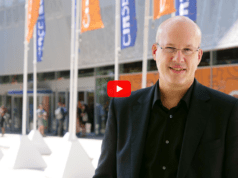
Merit Medical Systems has announced positive results from a prospective, observational, first-in-human study to evaluate the safety and effectiveness of Wrapsody—a self-expanding, cell-impermeable endoprosthesis designed for the treatment of arteriovenous (AV) fistula access circuit stenosis and AV graft access circuit stenosis.
The prospective, observational study published in CardioVascular and Interventional Radiology by James Gilbert (Oxford University Hospitals, Oxford, UK) et al, reported 100% target lesion primary patency (TLPP) rate without reintervention through 30 days, with a 12-month TLPP rate of 84.6% and a 12-month access circuit primary patency (ACPP) rate of 65.9%.
The authors state that these results suggest that the Wrapsody endoprosthesis is a safe and effective treatment for AV access circuit stenosis.
The study enrolled 46 subjects with clinically relevant stenosis, who were treated at three centres. The eligible population consisted of patients undergoing haemodialysis through an AV circuit with clinical and radiological evidence of stenosis at the graft-vein anastomosis, in the peripheral outflow veins or in the central veins up to the superior vena cava. The subjects did not have clinically relevant secondary stenosis or thrombus in the access circuit.
The primary safety outcome measure was the proportion of subjects without localised or systemic safety events affecting the access circuit that resulted in surgery, hospitalisation or death during the first 30 days following device placement. All but one subject was free from such a safety event in the first 30 days following device placement (97.8%). The safety event was adjudicated as not related to the device or study procedure. Over the remainder of the study, there was one adverse event adjudicated as possibly device-related.
The primary effectiveness outcome measure for the study was the TLPP rate at 30 days following device placement, which was 100%. At six months following device placement, the TLPP rate was 97.7% and at 12 months following device placement, it was 84.6%.
The six- and 12-month ACPP rates were 84.4% and 65.9%, respectively. TLPP rates were similar regardless of access type and lesion location or whether subjects were treated with a single device or overlapping devices. In all cases, reintervention at the target lesion was successful in maintaining patency (12-month assisted TLPP rate of 100%.)
Primary investigator, Gilbert, said: “Early first-in-human study results show that the Merit Wrapsody endoprosthesis can be safely used to treat stenoses at key sites within a dialysis access circuit
“Even more encouraging are the very promising primary one-year target lesion patency rates of 84.6% and access circuit patency rate of 65.9%. To my knowledge, these are higher than any other published data and suggest that the novel features of the Wrapsody endoprosthesis may have a key role in preserving the longevity of precious dialysis access for our patients.”
Merit is also conducting a large multinational, multicentre study, the WAVE Study, which it plans to use to support a premarket approval application to the US Food and Drug Administration. Enrollment in the randomised WAVE Study comparing the Wrapsody endoprosthesis to percutaneous transluminal angioplasty for treatment of venous outflow circuit stenosis or occlusion in hemodialysis patients began in March 2021. Merit anticipates that the WAVE Study will include 477 subjects.
Fred Lampropoulos, Merit’s chairman and CEO, added: “Merit has built its commercial legacy on innovative products that benefit patients and advance standards of care.
“We are encouraged by the Wrapsody FIRST study’s positive results and excited to help shape the future of arteriovenous access circuit stenosis treatment. We look forward to assessing future study results regarding the Merit Wrapsody endoprosthesis, and to making a positive impact in the lives of patients suffering from kidney disease.”













